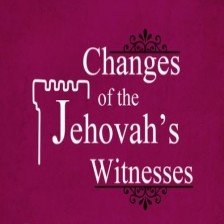The book The Non-Christian Cross, by J. D. Parsons (London, 1896), adds: “There is not a single sentence in any of the numerous writings forming the New Testament, which, in the original Greek, bears even indirect evidence to the effect that the stauros used in the case of Jesus was other than an ordinary stauros; much less to the effect that it consisted, not of one piece of timber, but of two pieces nailed together in the form of a cross. . . . It is not a little misleading upon the part of our teachers to translate the word stauros as ‘cross’ when rendering the Greek documents of the Church into our native tongue, and to support that action by putting ‘cross’ in our lexicons as the meaning of stauros without carefully explaining that that was at any rate not the primary meaning of the word in the days of the Apostles, did not become its primary signification till long afterwards, and became so then, if at all, only because, despite the absence of corroborative evidence, it was for some reason or other assumed that the particular stauros upon which Jesus was executed had that particular shape.”—Pp. 23, 24; see also The Companion Bible, 1974, Appendix No. 162.
Insight On the Scriptures-Volume I. 1988. p. 1192
The book The Non-Christian Cross, by John Denham Parsons, states: “There is not a single sentence in any of the numerous writings forming the New Testament, which, in the original Greek, bears even indirect evidence to the effect that the stauros used in the case of Jesus was other than an ordinary stauros; much less to the effect that it consisted, not of one piece of timber, but of two pieces nailed together in the form of a cross. . . . it is not a little misleading upon the part of our teachers to translate the word stauros as ‘cross’ when rendering the Greek documents of the Church into our native tongue, and to support that action by putting ‘cross’ in our lexicons as the meaning of stauros without carefully explaining that that was at any rate not the primary meaning of the word in the days of the Apostles, did not become its primary signification till long afterwards, and became so then, if at all, only because, despite the absence of corroborative evidence, it was for some reason or other assumed that the particular stauros upon which Jesus was executed had that particular shape.”—London, 1896, pp. 23, 24.
Insight On the Scriptures-Volume II. 1988. p. 1116-1117
The book The Non-Christian Cross, by J. D. Parsons (London, 1896), says: “There is not a single sentence in any of the numerous writings forming the New Testament, which, in the original Greek, bears even indirect evidence to the effect that the stauros used in the case of Jesus was other than an ordinary stauros; much less to the effect that it consisted, not of one piece of timber, but of two pieces nailed together in the form of a cross. . . . It is not a little misleading upon the part of our teachers to translate the word stauros as ‘cross’ when rendering the Greek documents of the Church into our native tongue, and to support that action by putting ‘cross’ in our lexicons as the meaning of stauros without carefully explaining that that was at any rate not the primary meaning of the word in the days of the Apostles, did not become its primary signification till long afterwards, and became so then, if at all, only because, despite the absence of corroborative evidence, it was for some reason or other assumed that the particular stauros upon which Jesus was executed had that particular shape.”—Pp. 23, 24; see also The Companion Bible (London, 1885), Appendix No. 162.
Reasoning From the Scriptures. 1985, 1989 ed. p. 89
“These crosses were used as symbols of the Babylonian sun-god, [See book], and are first seen on a coin of Julius Cæsar, 100-44 B.C., and then on a coin struck by Cæsar’s heir (Augustus), 20 B.C. On the coins of Constantine the most frequent symbol is [See book]; but the same symbol is used without the surrounding circle, and with the four equal arms vertical and horizontal; and this was the symbol specially venerated as the ‘Solar Wheel’. It should be stated that Constantine was a sun-god worshipper, and would not enter the ‘Church’ till some quarter of a century after the legend of his having seen such a cross in the heavens.”—The Companion Bible, Appendix No. 162; see also The Non-Christian Cross, pp. 133-141.
Reasoning From the Scriptures. 1985, 1989 ed. p. 91
“Various figures of crosses are found everywhere on Egyptian monuments and tombs, and are considered by many authorities as symbolical either of the phallus [a representation of the male sex organ] or of coition. . . . In Egyptian tombs the crux ansata [cross with a circle or handle on top] is found side by side with the phallus.”—A Short History of Sex-Worship (London, 1940), H. Cutner, pp. 16, 17; see also The Non-Christian Cross, p. 183
Reasoning From the Scriptures. 1985, 1989 ed. p. 91
